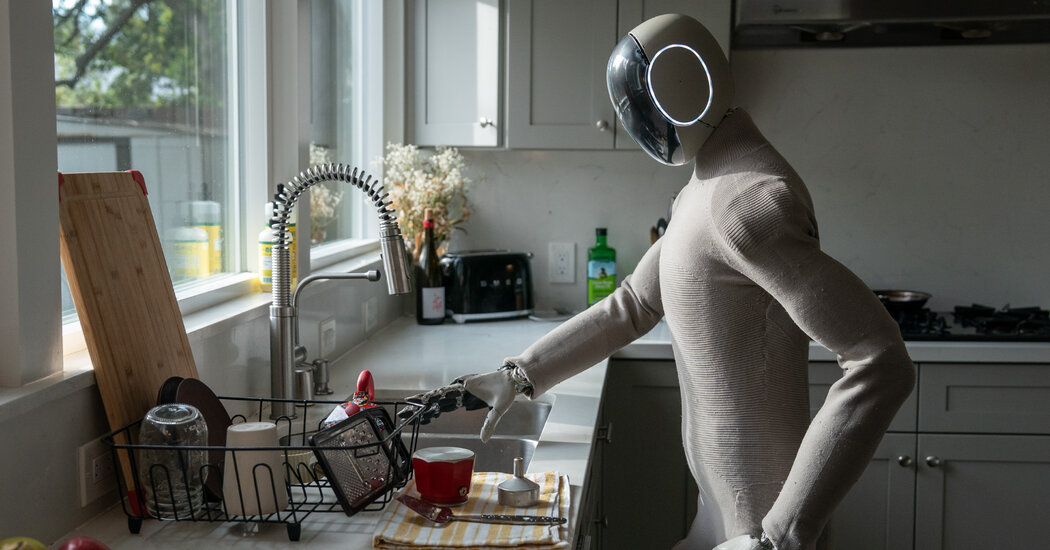Humanoid Robots Making Their Way into Homes

On a bright morning, I approached the front door of an elegant two-story residence nestled in Redwood City, California. Almost instantly, the door swung open to reveal a remarkably lifelike robot, draped in a snug beige bodysuit that accentuated its slender figure. This humanoid greeted me with a voice that carried a hint of a Scandinavian accent. Eager to connect, I extended my hand for a shake, and the robot responded with a firm grip, stating, “I have a firm grip.”
As the homeowner, a Norwegian engineer named Bernt Børnich, requested a bottle of water, the robot smoothly pivoted, made its way to the kitchen, and effortlessly opened the refrigerator door with one hand.
Artificial intelligence is already revolutionizing various fields by driving vehicles, composing essays, and even generating computer code. Now, humanoid robots—machines designed to mimic human likeness and powered by advanced A.I.—are on the brink of integrating into our daily lives, ready to assist with household chores. Mr. Børnich is the visionary founder and chief executive of a start-up called 1X. By the end of this year, his company aims to deploy its innovative robot, Neo, into over 100 homes throughout Silicon Valley and beyond.
The founder and chief executive of 1X, Bernt Børnich, alongside Neo, the company’s latest humanoid model. Credit: David B. Torch for The New York Times
1X is just one among many start-ups racing to introduce humanoid robots to both residential and commercial settings. Since 2015, investors have injected a staggering $7.2 billion into more than 50 start-ups focused on humanoid technology, according to PitchBook, a prominent research firm that monitors the tech industry. The excitement surrounding humanoids reached a new high last year, with investments soaring past $1.6 billion. This figure does not even include the substantial financial resources that Elon Musk and his company, Tesla, are channeling into developing Optimus, a humanoid robot project that began in 2021.
